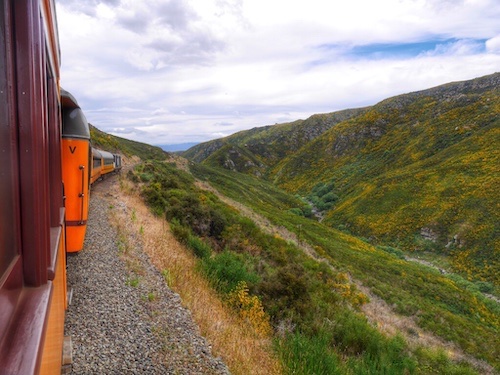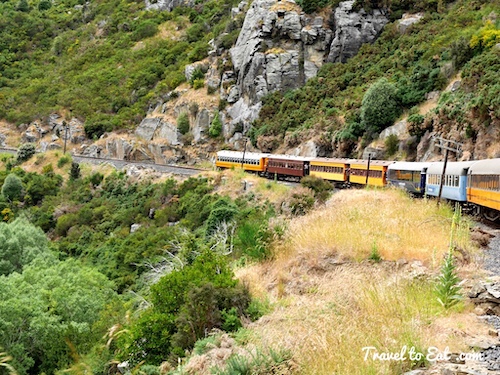
During our cruise to Australia and New Zealand we made a stop at Dunedin on the South Island in New Zealand, the second largest city of the South Island. While Tauranga, Napier-Hastings and Hamilton have eclipsed the city in population in recent years to make it only the seventh largest city in New Zealand, Dunedin is still considered to be one of the four main cities of New Zealand for historic, cultural, and geographic reasons. We decided to take the historic Taieri Gorge Railway to see some of the countryside outside town. Departing from Dunedin’s beautiful railway station the Taieri Gorge Railway begins its scenic journey into some of New Zealand’s most ever-changing, spectacular and iconic scenery. The train travels through the Southern parts of Dunedin city until it arrives at Wingatui Junction where it turns off onto the Taieri branch. From here the train sneaks across the Taieri Plains and climbs into the Taieri Gorge, a narrow and deep gorge carved out over the centuries by the ancient Taieri River.
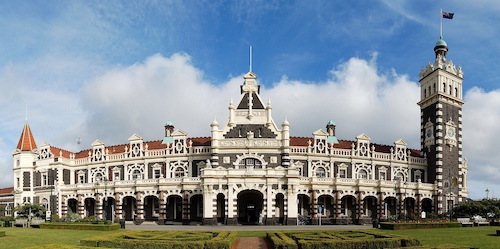

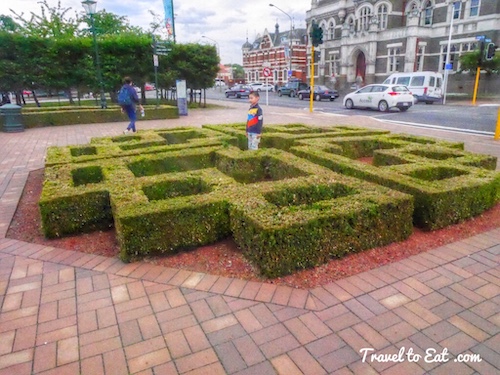
Dunedin Railway Station in Dunedin on New Zealand’s South Island, designed by George Troup, is the city’s fourth station. It earned its architect the nickname of “Gingerbread George”. This building embodies Dunedin’s wealthy inheritance. During the city’s most prosperous years this railway station was the country’s busiest, handling up to 100 trains each day. Though there have been many debates about whether the building is actually beautiful or not, the overall effect is undeniably grandiose and the station is New Zealand’s most photographed building.
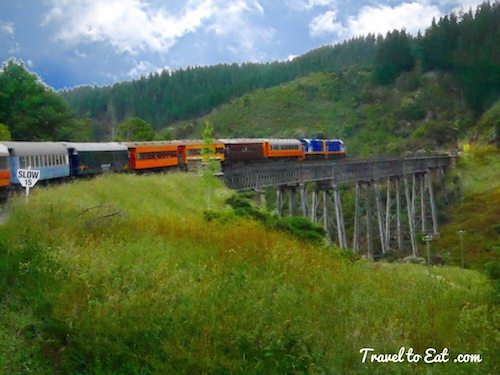
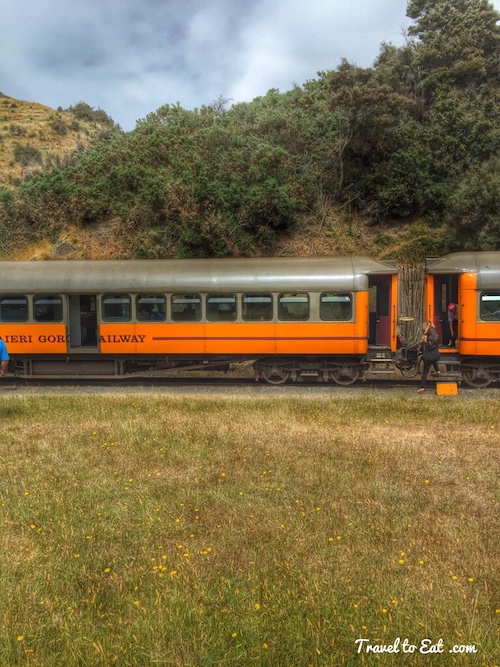
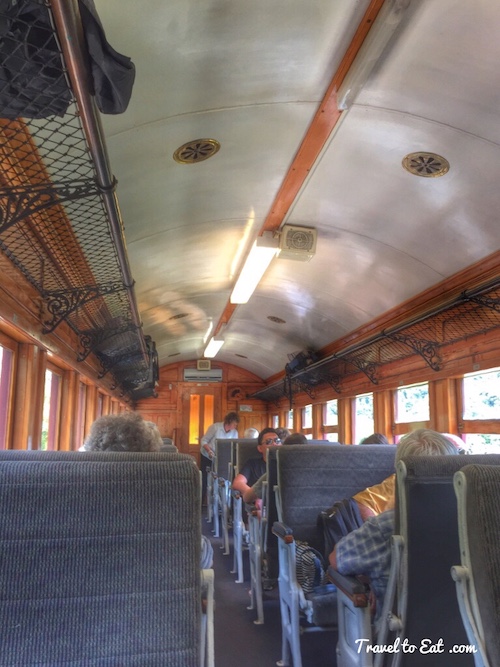

The Taieri Gorge Railway runs from Dunedin to the Wingatul junction, with a brief stop at Hindon until it arrives at the top of the gorge at Middlemarch.
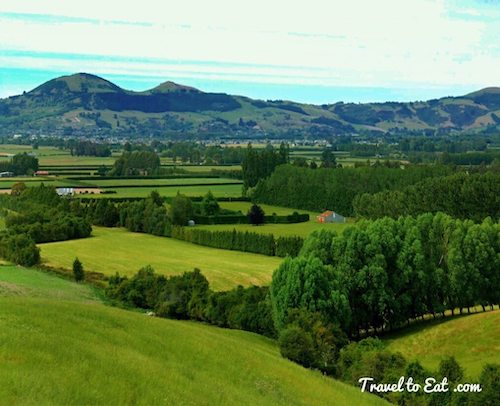
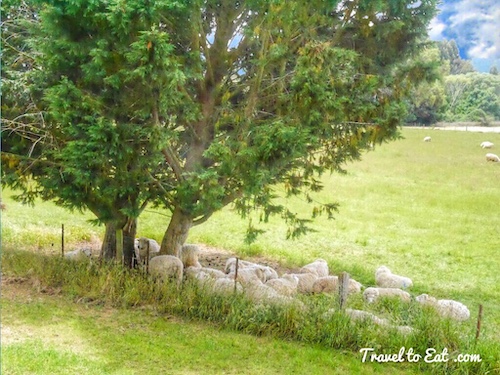
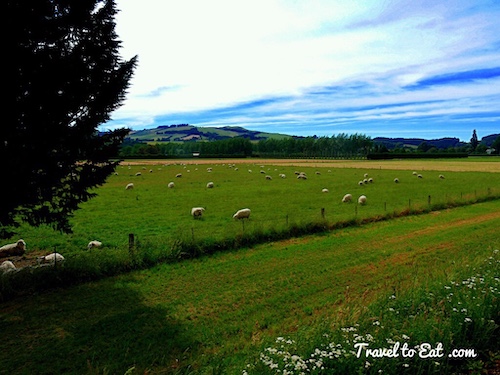
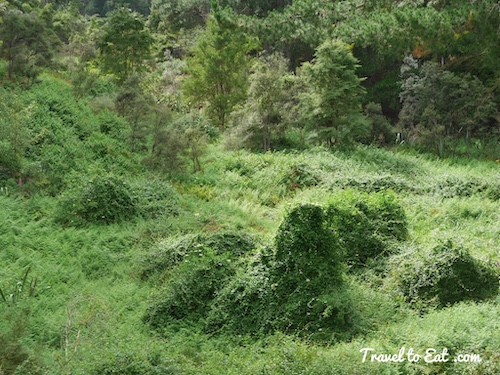
As we moved out of Dunedin, we passed numerous pastures and ranches on the Taieri Plain with sheep, cattle and horses. Departing from Dunedin’s beautiful railway station the Taieri Gorge Railway begins its scenic journey into some of New Zealand’s most ever-changing, spectacular and iconic scenery. The train travels through the southern parts of Dunedin city until it arrives at Wingatui junction where it turns off onto the Taieri branch. From here the train sneaks across the Taieri Plains and climbs into the Taieri Gorge, a narrow and deep gorge carved out over centuries by the ancient Taieri River. New Zealand is far away from markets in North America and Europe. One-third of the land in New Zealand is used for grazing and crops. Because of the mountains, the land is not good for growing crops. But it is good for feeding animals. That is why New Zealand’s 60 million sheep and 9 million cattle graze in this area. The New Zealand cattle industry is based on almost exclusively grass fed production systems. Nearly all cattle, sheep and horses are therefore raised on open pastures and are based on broad acreage free range principles.
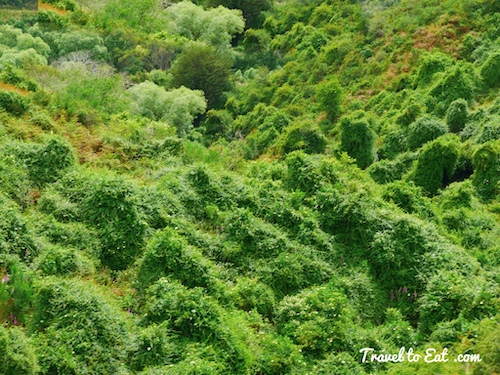
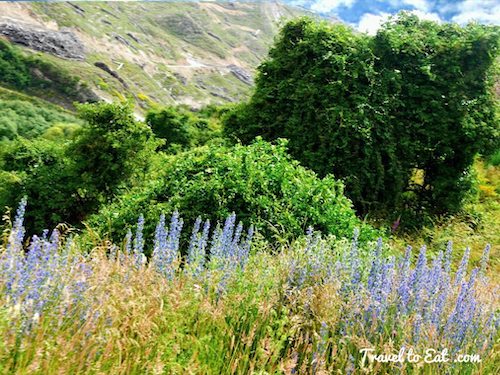
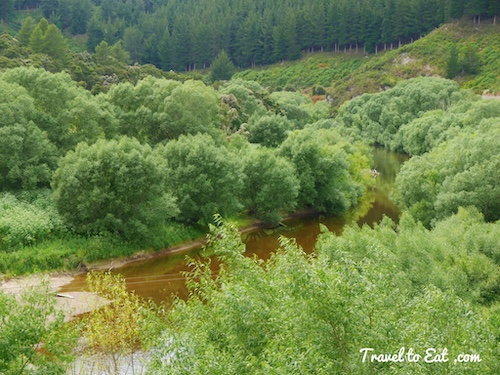
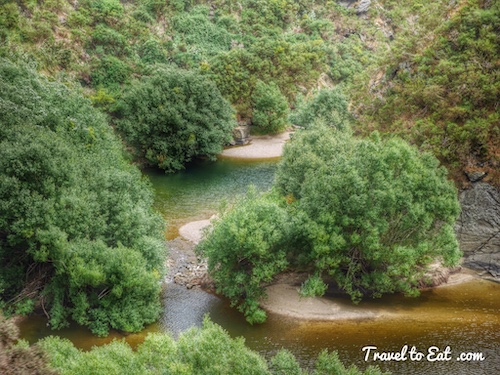

As we entered the Taieri Gorge we began to see smaller pastures and the walls of the gorge rising around us. There were white and yello colors that featured the sides of the gorge. There were even little patches of lavender to color the trip.
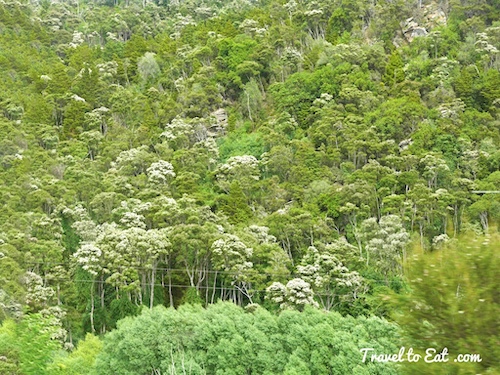
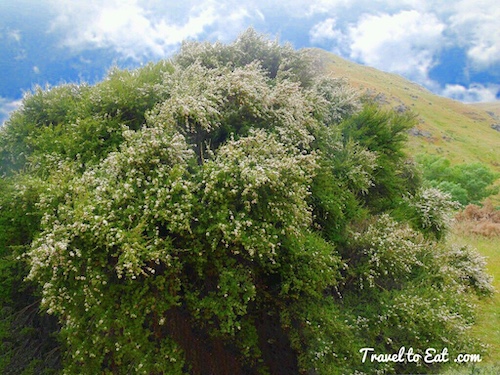
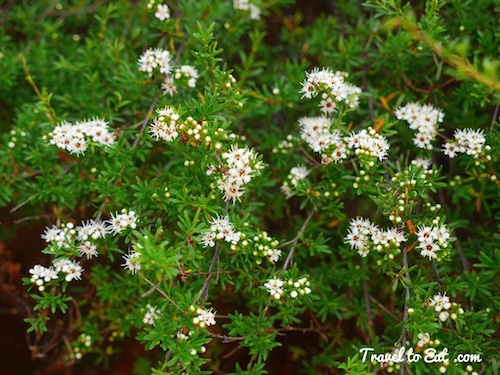
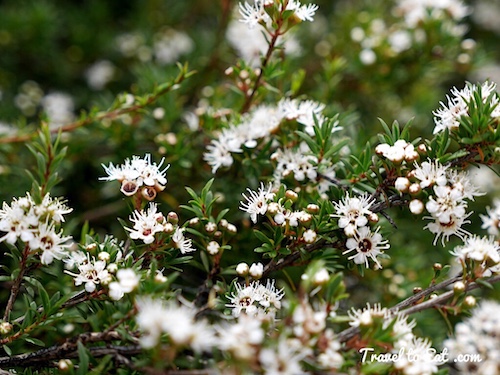
As we went higher, the hills became covered with white and yellow flowers. The white flowers are from the “tea trees”. The family Myrtaceae contains many plants, including the Australian tea tree (Melaleuca alternifolia) and its New Zealand equivalents manuka (Leptospermum scoparium) and kanuka (Kunzea ericoides, formerly Leptospermum ericoides), which are currently being investigated for their therapeutic properties. These species have been known collectively as “tea trees” since Captain Cook used their leaves to brew a strong tea for his sailors. Parts of the trees were used extensively by the early settlers of both countries, and the Maori and aboriginal people have been using parts of tea trees therapeutically for centuries. Various preparations of the gum, sap, seed pods, leaves, bark or flowers of manuka have been used both externally and internally to treat many conditions, such as sores, constipation, colic, fever and coughs, among other aliments. Mānuka (from Māori) is the common name used along with “jelly bush” and “tea tree” in Australia and to a lesser extent also in New Zealand. This name arose because Captain Cook used the leaves to make a ‘tea’ drink. The common name “tea tree” is also shared with the related melaleuca tree of Australia, suggesting that both were used to make tea by Captain Cook. It is cultivated in New Zealand for mānuka honey, produced when honeybees gather the nectar from its flowers, and for the pharmaceutical industry. It is also used for carving and oils.
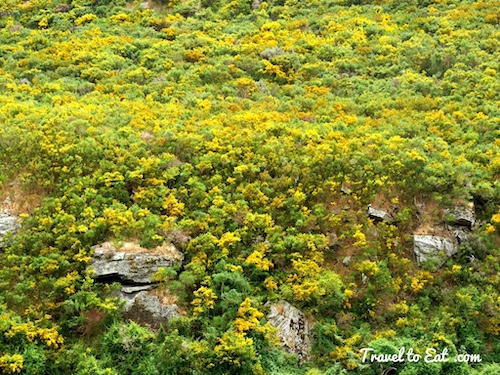
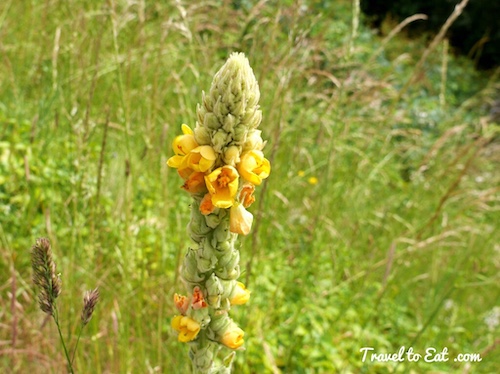
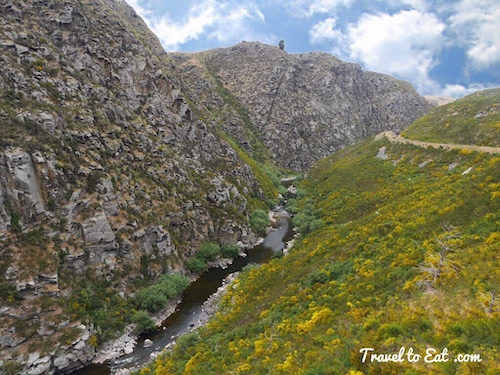
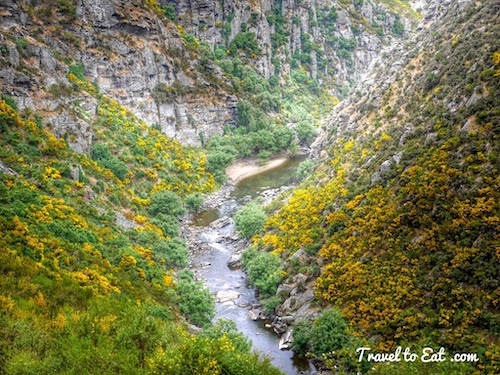
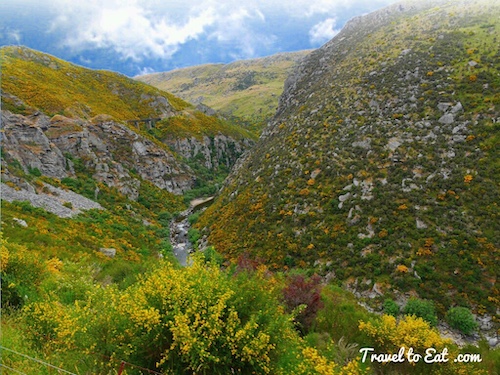

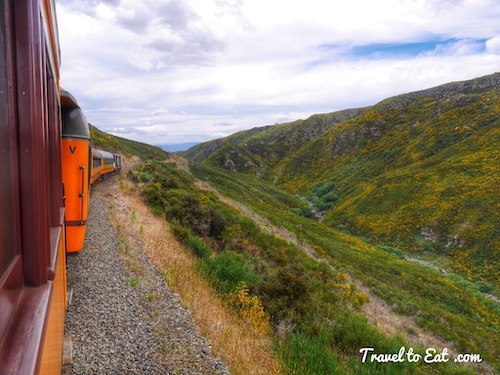
In New Zealand, where it is known as the Russell lupin, Lupinus polyphyllus is classed as an invasive species and covers large areas next to roadsides, pastures and riverbeds, especially in the Canterbury region. It is documented as being first naturalized in 1958 and it has been suggested that tour bus drivers deliberately spread seeds of the plant to promote colourful roadside vegetation in areas which some tourists may consider to be rather drab. The plant threatens indigenous species especially when it invades the braided river beds in the South Island. Certain species, such as the yellow bush lupin (L. arboreus), are considered invasive weeds when they appear outside their native ranges. In New Zealand, L. polyphyllus has escaped into the wild and grows in large numbers along main roads and streams on the South Island.
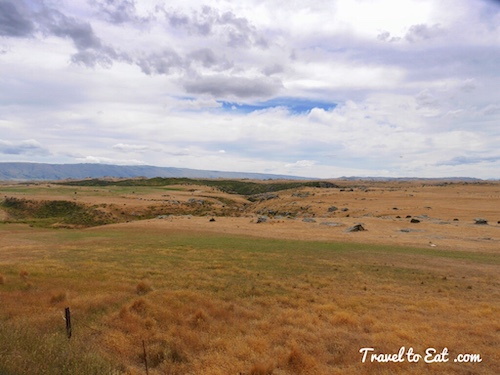
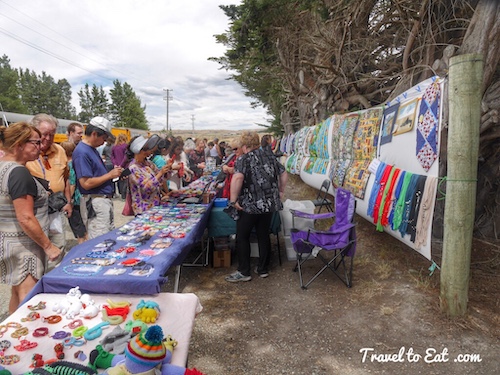
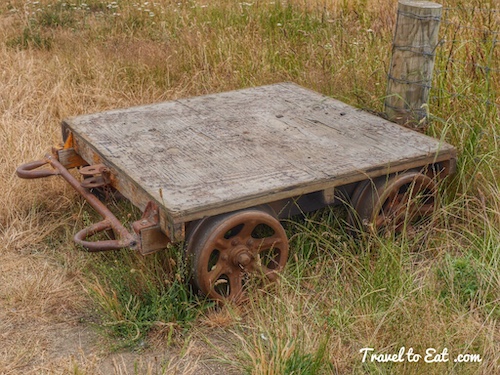
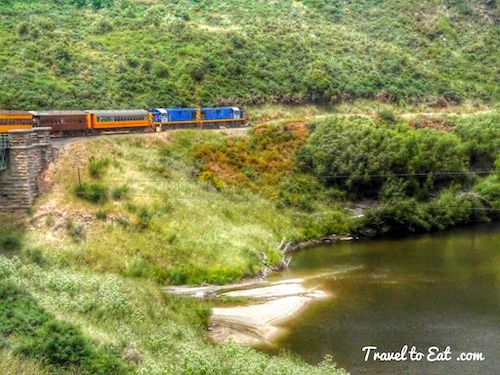
When you get to the top of the gorge, the green foliage gives way to a dry plain in Middlemarch. It is not a desert but definitely more dry than the gorge. The locals set up an impromptu market of souvenirs and reminders of the trip. If you are like me and enjoy vintage trains, I think you will find this little excursion rewarding. Most of the train carriages are heritage carriages built between 1915-1920s. These have been fully restored and have padded comfortable seats, most of which flip over to face the direction of travel. They are warm and full of character. Trains give you a chance to really experience the landscape and this one is a gem.
[mappress mapid=”89″]
References:
Dunedin Raiways: http://www.taieri.co.nz/
Dunedin Railway Station: http://www.dunedin.nz.com/railway-station.aspx
Tea Tree: http://lpi.oregonstate.edu/f-w98/teatrees.html
Kunzea ericoides: http://www.ncbi.nlm.nih.gov/pmc/articles/PMC4154306/
Mānuka Honey: http://www.webmd.com/a-to-z-guides/manuka-honey-medicinal-uses

